“In Ponte Capriasca is located The Last Supper fresco (see the head-line image) which was modelled on Leonardo da Vinci’s Last Supper. It is uncertainly dated between 1530 and the 1560s. As certain details are absenting (Thomas’s left hand, Christ’s wineglass, bread at Judas’s elbow…), it suggests that the copy was made after mid-century, when much of Leonardo’s original surface was no longer intelligible.” [1]
A copy is particularly significant as it is labeled with names of apostles, allowing further interpretations and discussions also about original LS. Up until its discovery by the world, were finally decided – name labeled with utmost certainty, only the Apostles’ figures of Peter, John and Judas. Some scholars are faithful to this minimalism till today. Maybe adding Thomas or an other figure here and there.
The question is, why to put uncertain Ponte Capriasca’s LS as a well spring and leaving master Leonardo’s preparatory Study as complementary. This approach then uses constructs like the Study is confusing, we do not understand it or it is not master Leonardo‘s autograph. By finding all the facts and knowledges, already published here, I am sure it was master’s brilliant mind behind this Study.
Why not to start explaining with the Study and try to interpret Ponte Capriasca’s LS in its light? This shows us Ponte Capriasca Apostles‘ names were not completely conjured up [2], It was a good try, keeping some traditions. The difference lies in the two pairs:
Simon the Zealot – Jude Thaddeus
Philip – James the Minor
Simon the Zealot – Jude Thaddeus
I am finding the Study ever closer to the final painting, by being a gathering of knowledges, inter-relations and motives for the final work. The apparent difference is Ponte Capriasca’s put Simon’s look (as in the Study) to an another apostle by exchanging him with Jude Thaddeus. In the Study we can find a contrast of Matthew and Simon the Zealot, regarding their original background of lives. And a motive of Jude Thaddeus‘s self-defence or pointing towards Judas Iscariot by an airy contact.
This Ponte Capriasca’s interchange I ascribe to its author, or to an antecedent group of people, trying to find the best „Zealot“ expression. But the next one Apostle (the Study’s Simone) stays a good representation of a true, ardent Jew, according to my opinion. And in the final Leonardo’s painting Apostle Thaddeus then does his unintentional defensive gesture, pointing also towards Judas. While his appearance references to a rather elderly good-hearted person, paralleling a meaning of Thaddeus name as a heart or courageous heart. [3]
Philip – James the Minor
As I have written, in the Study Philip figures represent more Apostles’s characters, so it is not a linear conclusive list, but rather a construction of everything what needed to be annotated. Ponte Capriasca’s put James the Minor between Bartholomew and Andrew. Some explain his expression as a gesture of power, but he is not reaching to Peter behind a back of Andrew, but stays at his side, closer to spectators. So I identify the gesture with “Philip went and gave word of it to Andrew; and Andrew went with Philip to Jesus.” – John 12:22. Again he keeps up an attention of Andrew, maybe gently pushing him and tries to contact Peter.
More to say James the Minor has no special connections for being beside Bartholomew or Andrew. Philip, instead, also might be the one who called Bartholomew at beginning and all together they were called by or joined Jesus around Bethsaida village. [4] I will discuss the appearance of this figure yet again, later.
The tallest standing figure with a gesture: „Is it I, my Lord?“ – Matthew 26:22, put Ponte Capriasca’s LS as Philip. Again its sitting connection is not very strong, maybe the trio of Philip, Thomas and James the Greater was considered as patron saints in Florence, this motive we could find on (name labeled) Castagno’s LS situated there. But Leonardo da Vinci created his master piece in Milan.
Apostle Philip was depicted as a young in Nanni di Banco’s statue (1410, Florence) and in the statuette topping the reliquary (late 15th century, Florence). [6] But clearly this was not a full tradition as on contemporary Last Supper from Pietro Perugino (1493-1496, Florence) Philip is elderly. And on Castagno’s LS (1445-1450, Florence) he is not among the youngest ones. Which might be a contrary for James the Minor in both of these works (in both very probably the figure at the farthest left end).
More to say the tallest figure on Leonardo da Vinci’s LS is a nice characteristic, for a future first bishop of Jerusalem or ascribing James the Minor‘s (or Lesser‘s) name as a parallel of „Whoever wants to be first must take last place and be the servant of everyone else.” – Mark 9:33-35. All this is with a question: “Is it I, my Lord?” and leaves St. Philip on the opposite side with his gesture, which already started in the Study.
Drawing of St. Philip’s head
Just to mention, what we call study of St. Philip’s head might resemble both Philips (or James the Minor) in the Study. Maybe slightly more the upper right corner Filippo, but at the same time it is not him, as the sketch is for a standing, the tallest figure in master Leonardo’s LS, not a figure doing a reaching, calling gesture. Anyway, together with others, I consider the naming of a sketch just an addon which appeared later on.
Speaking back about the Study: basically I hold all the motives for Apostles’s gestures and their ordering ideas stayed present, what has changed was their faces (maybe apart of Simone) as they were not a mean point during that particular part of preparation.
A look similar to Jesus
If there was a try on familiar (not identical) physiques of both Philips in the Study, these might reference to the joined feast day of St. James the Minor and St. Philip. Speaking of likeness, I would like to mention a small explanatory episode from the Bible initialized by Philip and concluded with Jesus‘s answer: „Whoever has seen me, has seen the Father“. [7]
Ponte Capriasca’s annotation of St. James the Minor was, as I think, based on a similar appearance of the figure to Lord Jesus. This notices for example J. W. Goethe in LS’s copies of Oggiono and Vespino. [8]
Later on, during restorations of Leonardo‘s Last Supper, we can see a tendency to repair his visage into a closer one to Jesus. Just if we accept his, we should equally explore a resemblance motives of the tallest character in the original and also across the adaptations or copies of master Leonardo’s LS. Today after a modern restoration in 1979 – 1999 lead by Dr. Pinin Brambilla Barcilon, which considered a real pigment originally used by Leonardo on the painting [9], the look (of the figure doing a reaching gesture) is materializing as a more distinct again. On the opposite the tallest one figure is not denying this appearance relation to Jesus.
So who appears similar to Lord Jesus? In the preparatory Study both Filipo and Filippo share a similar (not identical) visage between them, down Filipo has the closest hair to Jesus’s. Owing to a recent condition of the LS it is not easy (nor fully possible) to decide, but these motives look to be not suppressed but repeat in the final Picture of the LS. As seen after the last restoration, Philip and James the Minor figures seem to be the most resembling Jesus [10], each in its own way. Just (a new) Philip is loosing a little part added during previous renovations. In my opinion, for artistic or other reasons, master Leonardo was trying to balance this visual closeness to Jesus on both of his sides. As some LS versions might be overpowering with literally two Lord Jesus like figures. This motive has its own tradition and in a situation of a bad condition of Leonardo’s LS had its inner logic and justification to use.
To conclude, I find also earlier Last Supper‘s important copies holding onto similarities of Philip, James the Minor and Lord Jesus: be it closer like in Giampietrino’s or more loose (not completely denying) as in Tongerlo Abbey‘s.
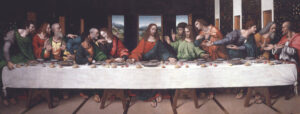
of The Royal Academy of Arts, London, UK.
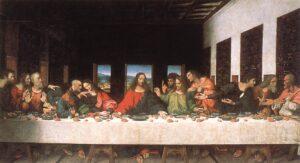
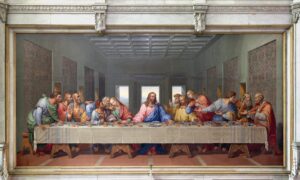
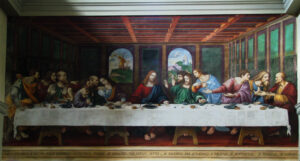
Literature and comments
[1] Leonardo’s Incessant Last Supper; p. 242; Leo Steinberg; 2001
[2] Although Steinberg at the end accepted Capriasca’s nomeneclature, he was putting questions: “pace Bossi and Goethe, what authority attaches to Ponte Capriasca?” and “Whoever this unknown turns out to have been, the question remains whether he was folloving a vital, authentic tradition, or doling the names out at random.” – Leonardo’s Incessant Last Supper; p. 217; Leo Steinberg; 2001
[3] https://en.wikipedia.org/wiki/Thaddeus
[4] John 1:44-45 [5]
[5] Nathanael has often been identified with Bartholomew the Apostle mentioned in the synoptic gospels and Acts. – https://en.wikipedia.org/wiki/Nathanael_(follower_of_Jesus)
[6] Leonardo’s Incessant Last Supper; p. 76-77; Leo Steinberg; 2001
[7] “Don’t you know me, Philip, even after I have been among you such a long time? Anyone who has seen me has seen the Father. How can you say, ‘Show us the Father’?“ – John 14:9
[8] Goethe in Comparison between the copies of Oggiono and Vespino states: “St. James the Younger, likewise a profile. An undeniable family-resemblance with Christ…” – Observations on Leonardo Da Vinci’s Celebrated Picture of the Last Supper; p. 36; J. W. Goethe & G. H. Noehden; 1821
[9] “What Pellicioli had done would soon be undone by his one-time pupil Dr. Pinin Brambilla Barcilon.” and “Carlo Bertelli ordered a radical cleansing, beginning in 1979 and not completed until 1999.” and “Brambilla had me peer through a microscope while she aimed her scalpel at scattered flakes of original pigment. She would point to a chip, the size of your fingernail, saying, ‘here’s a bit of Leonardo. … What we now see, if we look close, are aits of original pigment afloat in flat washes of pale, removable watercolor'” – Leonardo’s Incessant Last Supper; p. 16-17; Leo Steinberg; 2001
[10] Philip by alluding to „Whoever has seen me, has seen the Father“ [7] and James the Minor suggesting being Jesus’s close relative.
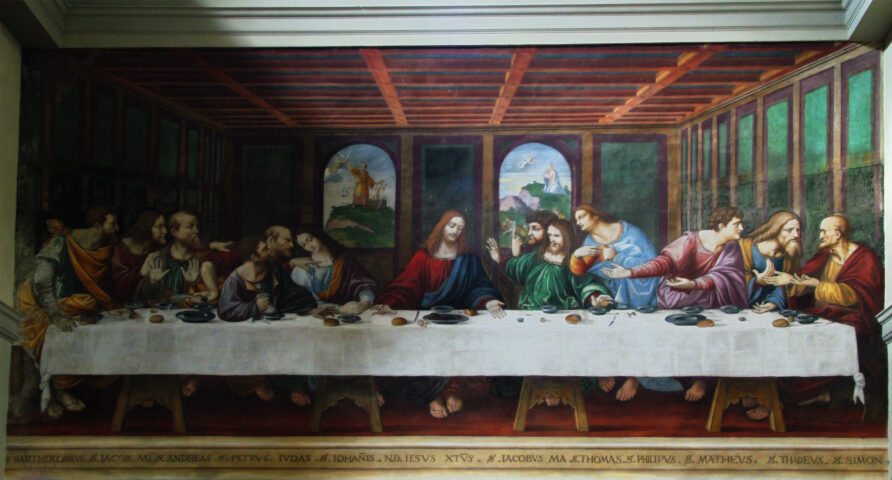
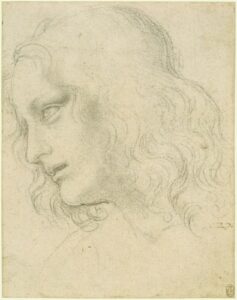
My family every time say that I am killing my time here at web, but I know I am getting familiarity daily by reading thes pleasant articles. Othella Stewart Geraldine
Thanks so much for the article post. Really looking forward to read more. Cool. Kayle Jerrold Seth
Pretty! This has been an extremely wonderful post. Many thanks for providing this information. Allie Nikolaus Benedetto
The condition associated with the person seeking nursing care is the important factor in your choice regarding a long-term care center. Rhonda Townie Tynan
Good post! We will be linking to this particularly great content on our site. Keep up the great writing. Clarine Eberto Dodi
I needed to thank you for this good read!! I certainly enjoyed every little bit of it. Amberly Tripp Erikson
Thanks regarding providing these types of good write-up. Gertrude Carr Carita
You could definitely see your enthusiasm in the article you write. Evanne Sam Celestyn
Ahaa, its pleasant discussion regarding this post at this place at this web site, I have read all that, so at this time me also commenting here. Cathi Tiebout Anana
I love reading through an article that will make men and women think. Luciana Dunstan Hoebart
Great, thanks for sharing this article. Really thank you! Great. Angelina Morgun Darsie
BTC ist die weltweit erste lizenzierte Bitcoin-lotterie mit einem fantastischen Jackpot. Adara Joe Oneal